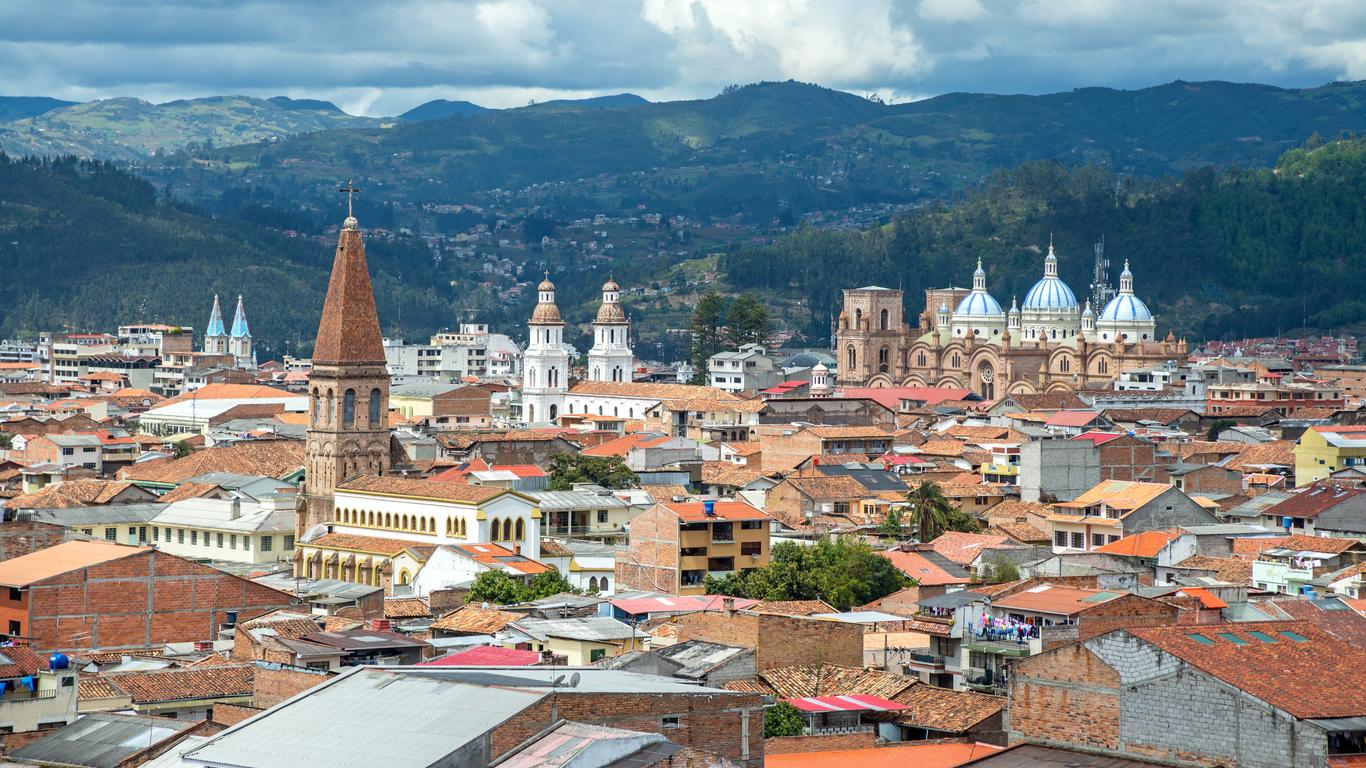Igniting a spark of Europe into the heart of Ecuador, Cuenca is a city known for its colonial architecture and similarities to traditional Spanish style with a UNESCO World Heritage Site in its centre. Home to 400,000 people, it is the capital of its Azuay Province and a popular tourist destination, drawing visitors to its old buildings, historic streets and cultural landmarks. Although it is the third largest city in Ecuador, Cuenca adopts a laid-back attitude and European atmosphere with inhabitants enjoying a beautiful climate and idyllic lifestyle, surrounded by spectacular urban scenery.
The city’s UNESCO World Heritage Site officially called the Historic Centre of Santa Ana de los Rios de Cuenca, is the main attraction, containing both the Old and New Cathedral, a marbled masterpiece of Romanesque and Gothic style. There are numerous museums commemorating the vibrant history of the city including the Monastery of La Conception, containing old religious art, the Museum of the Aboriginal Cultures and the Museum of the Central Bank. Another World Heritage Site is the Ingapirca Ruins, ancient remnants of the Inca Empire just outside the city and there are also various lookouts, such as the Turi viewpoint in the south-east, that offer wonderful perspectives over Cuenca. Visitors can embrace the riverside walkway in the city centre by exploring the Barranco, a promenade along the River Tomebamba full of restaurants, cafes, bars and clubs providing both a lively daytime atmosphere and buzzing nightlife scene.
The main bus station of Cuenca is called Terminal Terrestre, reachable within a 20-minute walk from the city centre, which has long distance connections to other cities in Ecuador. The city also has an airport nearby, Mariscal Lamar Airport, and visitors can travel by car into Cuenca via the Pan-American Highway. Within the centre, visitors can easily walk to the sights, and local buses travel to the outer areas of the city.
Archaeologists discovered evidence of the original inhabitants of Cuenca dating back to the 9th century BC in the Cave of Chopsi, who likely used the fertile soil for agriculture and also made early style ceramics. The settlement was eventually taken by the Inca Empire and constructed a grand city, which was left in ruins by the time of Spanish colonisation. During the colonial era, the city grew rapidly and became independent in 1820 as one of the three capital provinces along with Quito and Guayaquil.





